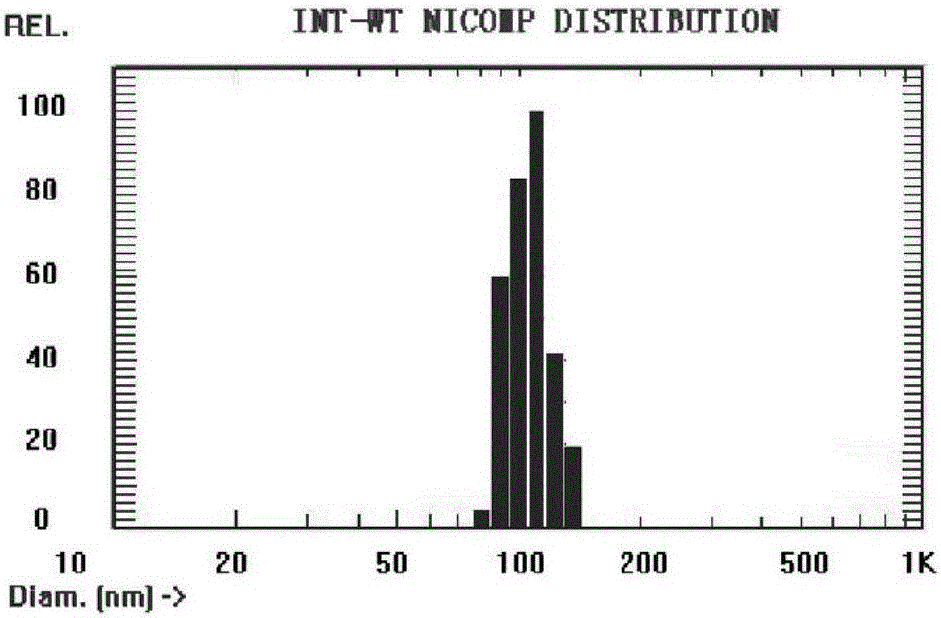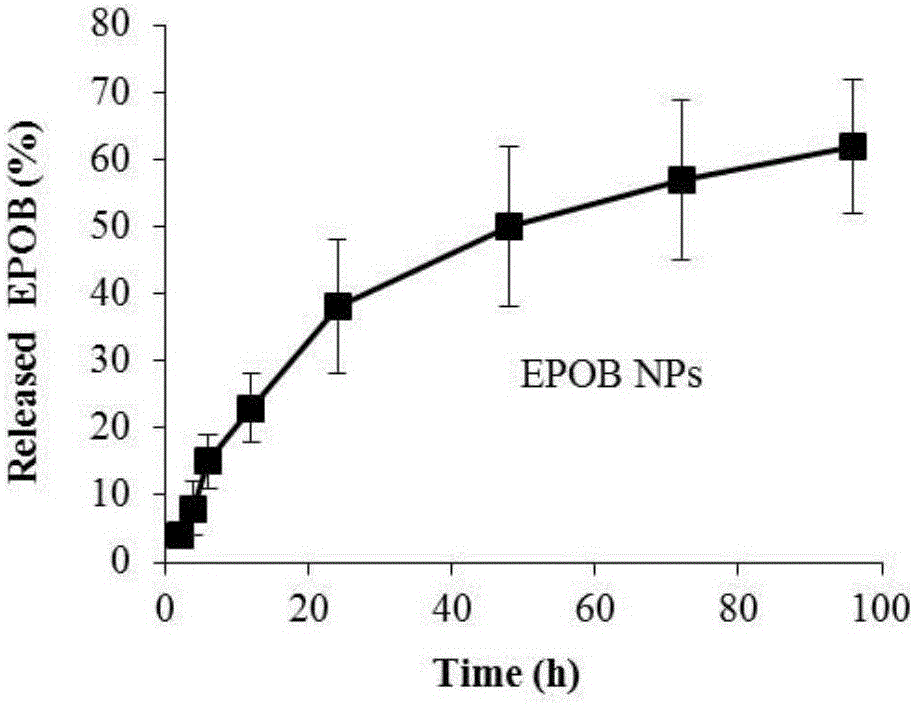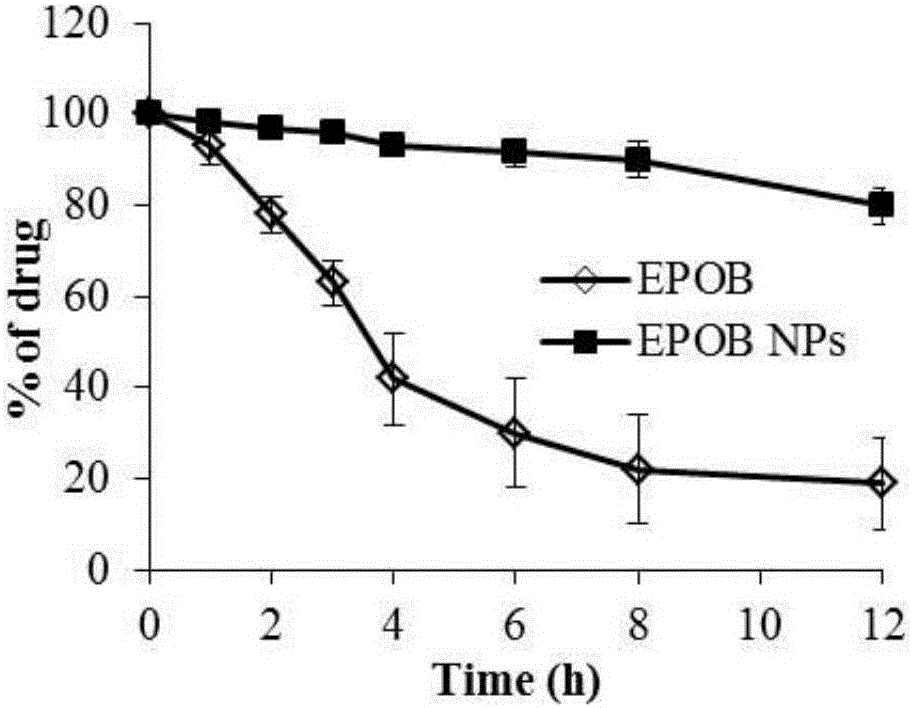Epothilone B polymer nanoparticle preparation for treating tumors and preparation method thereof
A technology of epothilones and polymers, which is applied in the field of epothilone B polymer nanoparticle preparations and its preparation, can solve the problems of being unsuitable for large-scale production, inability to perform filtration sterilization, poor process repeatability, etc., and achieve Prolong the action time in vivo, improve the anti-tumor effect, avoid the effect of esterase hydrolysis and RES phagocytosis
- Summary
- Abstract
- Description
- Claims
- Application Information
AI Technical Summary
Problems solved by technology
Method used
Image
Examples
Embodiment 1
[0032] Dissolve 0.2g epothilone B and 1.8g PEG-PLA in 10mL dichloromethane as the organic phase, and dissolve 0.2g poloxamer 188 in 100mL double-distilled water as the water phase. The organic phase was added to the water phase, stirred for 3 minutes at 8°C, and circulated 6 times with a high-pressure homogenizer at a pressure of 6000 psi; the obtained emulsion was placed in a tangential flow filtration system with a membrane molecular weight cut-off of 100kDa, and removed at 40°C. The epothilone B polymer nanoparticle preparation for treating tumors is obtained after the organic solvent and the free drug are concentrated, filtered and sterilized, and freeze-dried. Its average particle size is 110.2nm, and the epothilone B drug loading is 2.3%.
Embodiment 2
[0034] Dissolve 0.2g epothilone B and 1.8g PEG-PLA in 10mL dichloromethane as the organic phase, and dissolve 0.2g poloxamer 188 in 100mL double-distilled water as the water phase. The organic phase was added to the water phase, stirred for 3 minutes at 8°C, and circulated 6 times with a high-pressure homogenizer at a pressure of 6,000 psi; the obtained emulsion was placed in a tangential flow filtration system with a membrane molecular weight cut-off of 100kDa, and removed at 20°C. The epothilone B polymer nanoparticle preparation for treating tumors is obtained after the organic solvent and the free drug are concentrated, filtered and sterilized, and freeze-dried. Its particle size distribution figure 1 As shown, the average particle diameter is 100.2nm, and the epothilone B drug loading is 7.8%.
Embodiment 3
[0036] Dissolve 0.2g epothilone B, 1.0g PEG-PLA and 0.8g PLA together in 10mL dichloromethane as the organic phase, 0.2g poloxamer 188 is dissolved in 100mL double distilled water as the water phase, stir at 6000rpm The organic phase was added to the water phase at a high speed, stirred for 3 min at 8°C, and circulated 6 times using a high-pressure homogenizer at a pressure of 6000 psi; the resulting emulsion was placed in a tangential flow filtration system, and the molecular weight cut-off of the membrane was 100 kDa , after removing the organic solvent and free drug at 10° C., concentrating, sterilizing by filtration, and freeze-drying, the epothilone B polymer nanoparticle preparation for treating tumors was obtained. The average particle size was 132.5 nm, and the drug loading of epothilone B was 8.9%.
PUM
| Property | Measurement | Unit |
|---|---|---|
| particle diameter | aaaaa | aaaaa |
Abstract
Description
Claims
Application Information
 Login to View More
Login to View More - R&D
- Intellectual Property
- Life Sciences
- Materials
- Tech Scout
- Unparalleled Data Quality
- Higher Quality Content
- 60% Fewer Hallucinations
Browse by: Latest US Patents, China's latest patents, Technical Efficacy Thesaurus, Application Domain, Technology Topic, Popular Technical Reports.
© 2025 PatSnap. All rights reserved.Legal|Privacy policy|Modern Slavery Act Transparency Statement|Sitemap|About US| Contact US: help@patsnap.com



